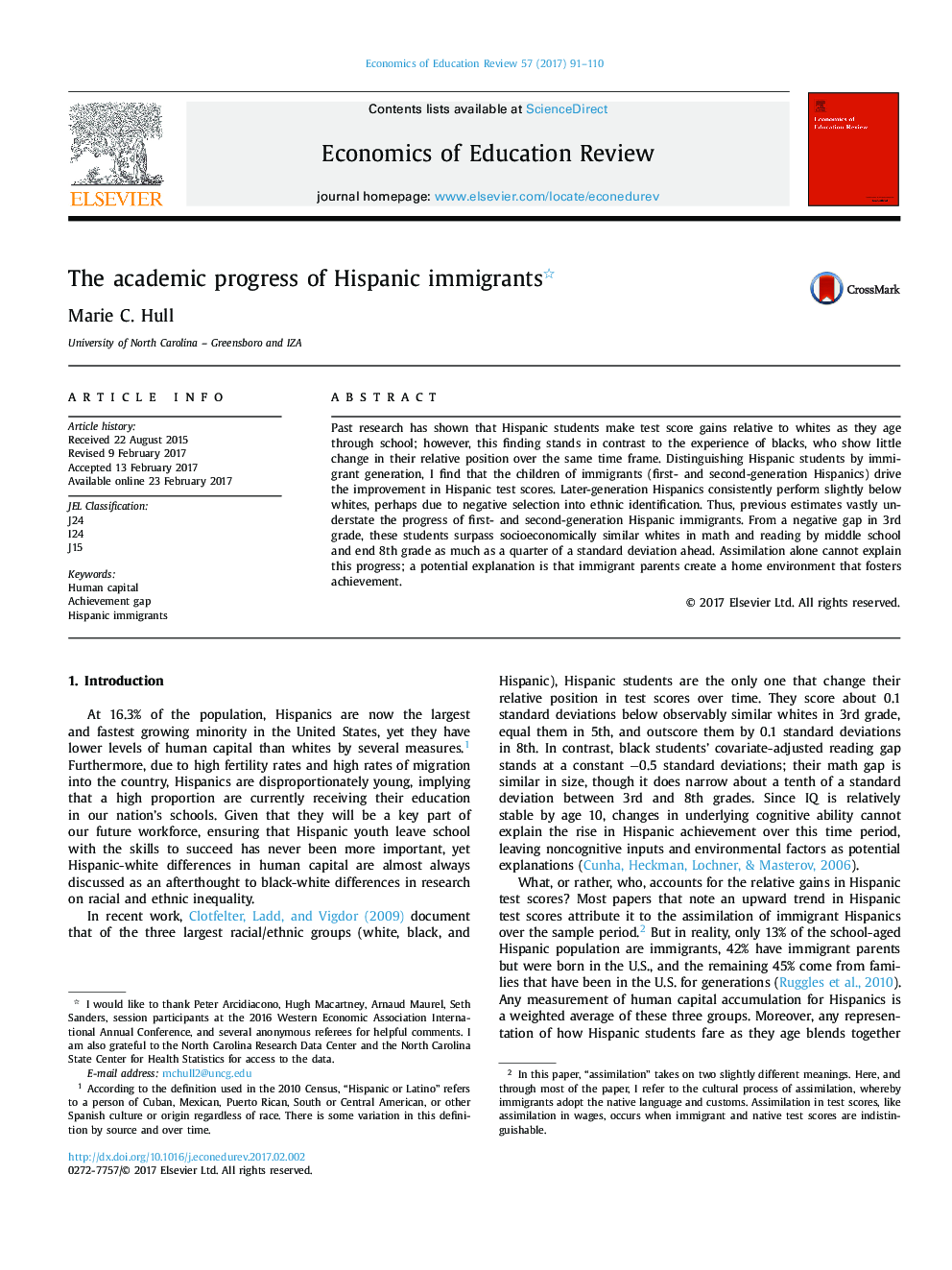| Article ID | Journal | Published Year | Pages | File Type |
|---|---|---|---|---|
| 4938346 | Economics of Education Review | 2017 | 20 Pages |
Abstract
Past research has shown that Hispanic students make test score gains relative to whites as they age through school; however, this finding stands in contrast to the experience of blacks, who show little change in their relative position over the same time frame. Distinguishing Hispanic students by immigrant generation, I find that the children of immigrants (first- and second-generation Hispanics) drive the improvement in Hispanic test scores. Later-generation Hispanics consistently perform slightly below whites, perhaps due to negative selection into ethnic identification. Thus, previous estimates vastly understate the progress of first- and second-generation Hispanic immigrants. From a negative gap in 3rd grade, these students surpass socioeconomically similar whites in math and reading by middle school and end 8th grade as much as a quarter of a standard deviation ahead. Assimilation alone cannot explain this progress; a potential explanation is that immigrant parents create a home environment that fosters achievement.
Related Topics
Social Sciences and Humanities
Economics, Econometrics and Finance
Economics and Econometrics
Authors
Marie C. Hull,
